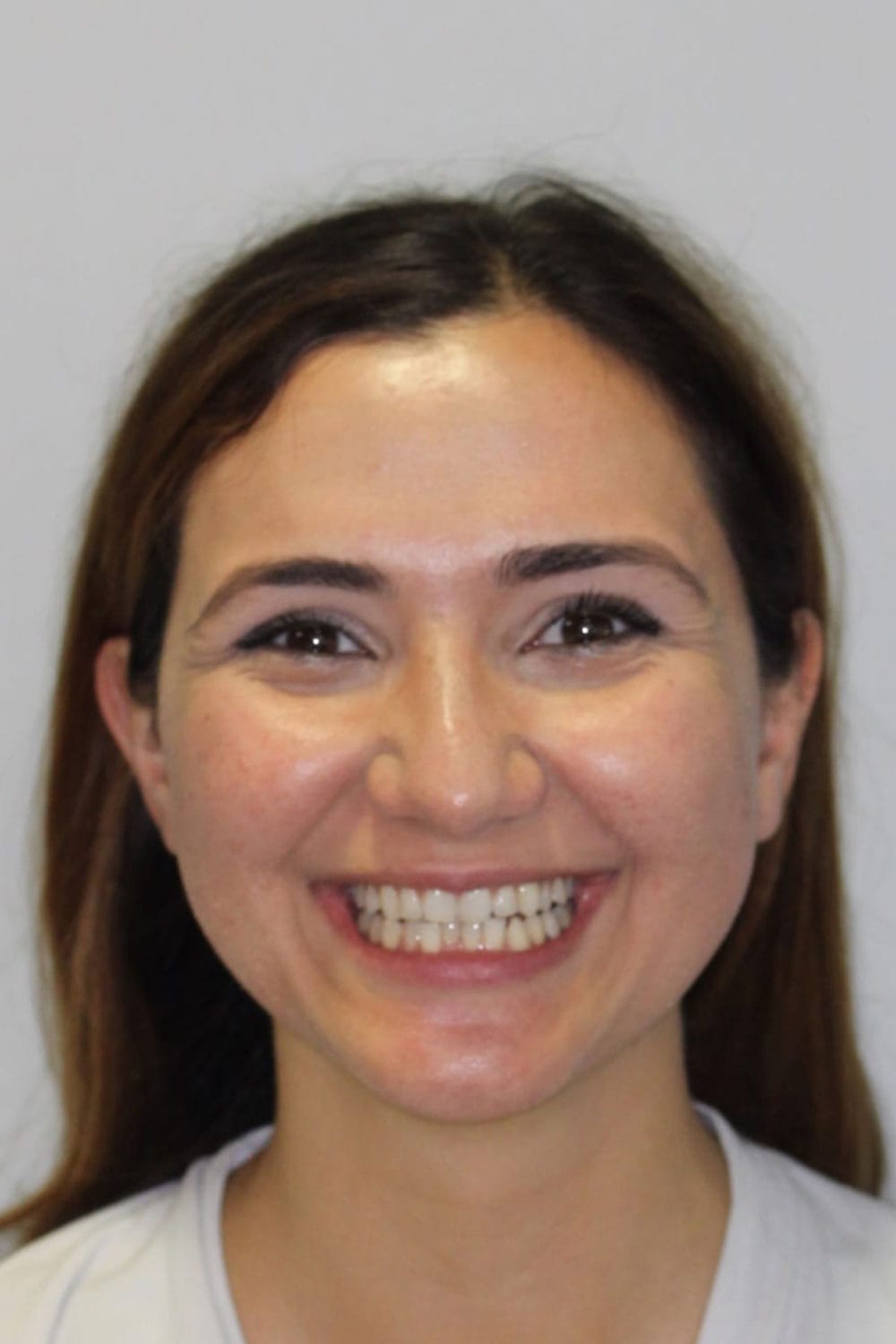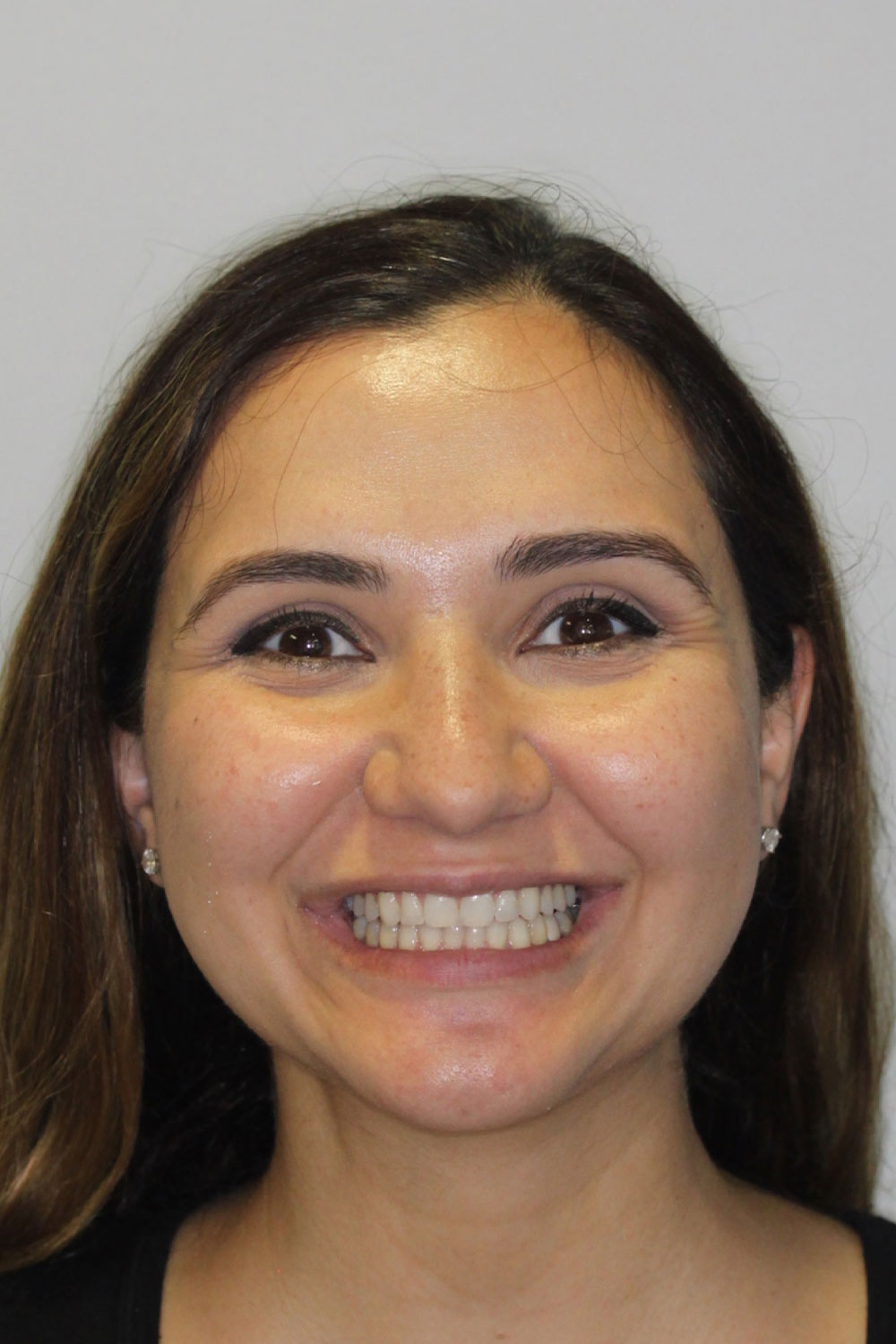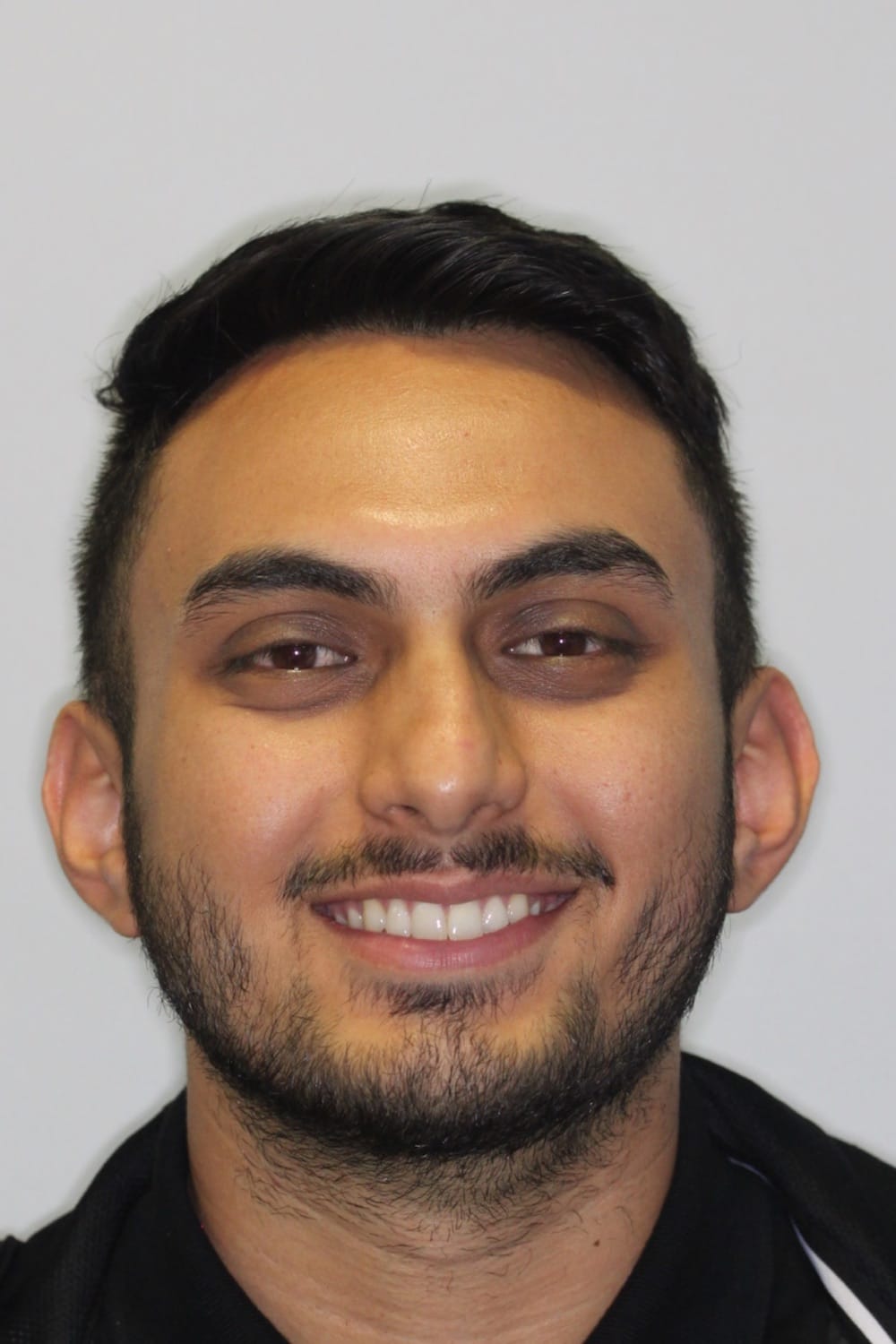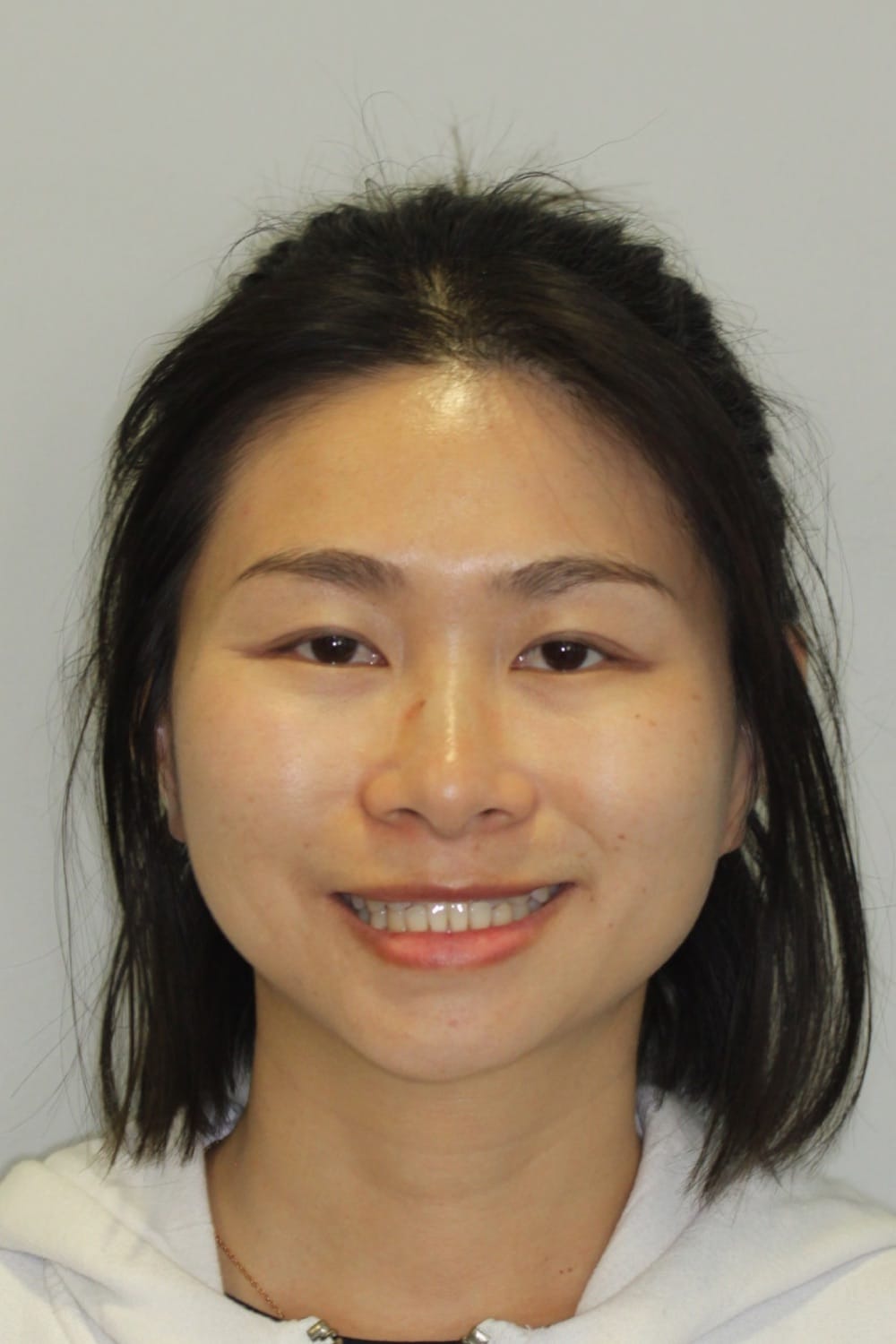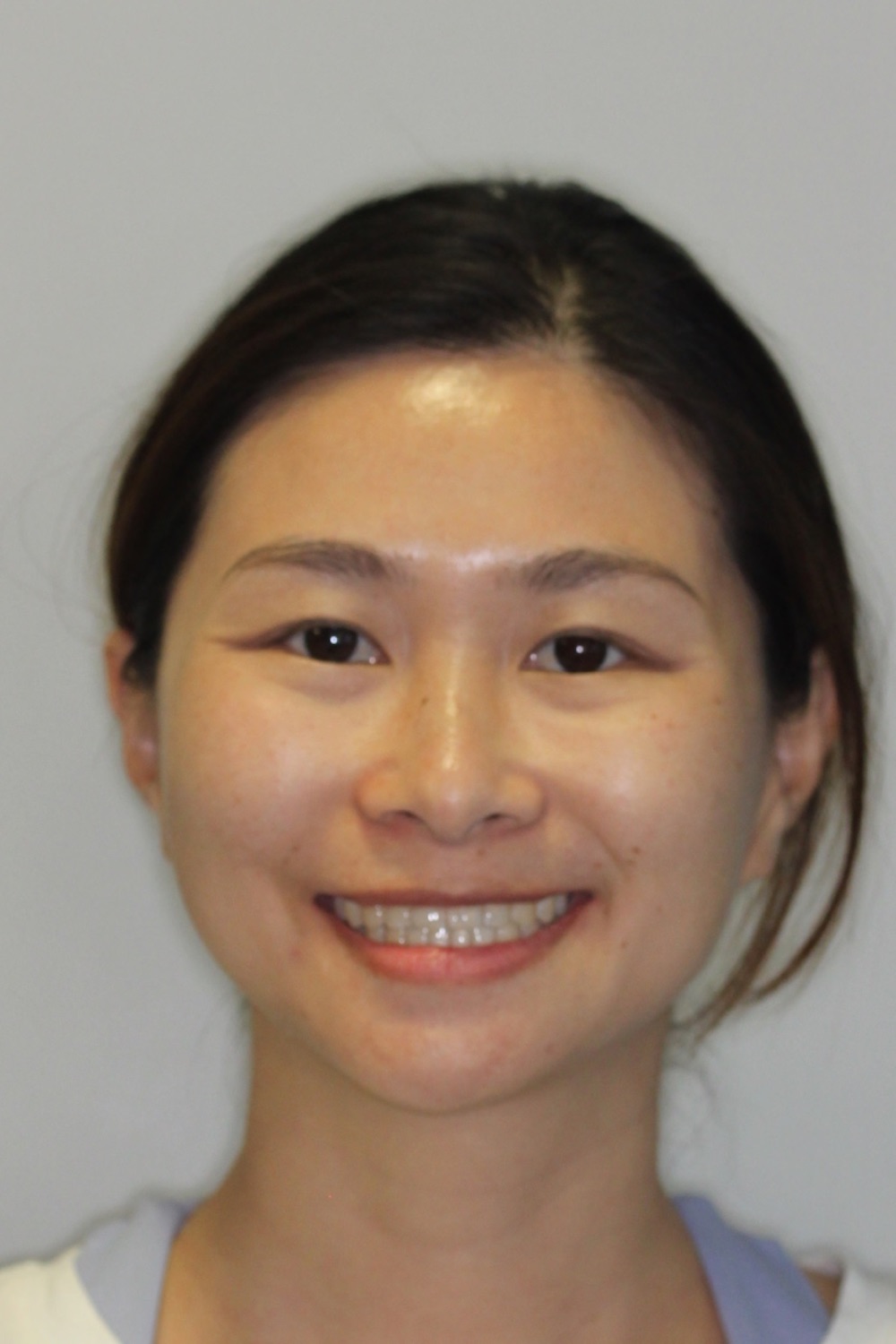Invisalign®
- What Is Invisalign?
- Invisalign Treatable Concerns
- Invisalign Limitations
- Invisalign Benefits
- Invisalign Candidates
- Invisalign® Vs. Braces
- How Invisalign® Works
- Invisalign® Teen
- Invisalign® Results
- Invisalign Cost
- Invisalign Vs. ClearCorrect
- Invisalign Alternatives
- Invisalign Longevity
- Invisalign and Staining
- Invisalign Side Effects
- Invisalign After Braces
- Adjunctive Invisalign Benefits
- Choosing an Invisalign Dentist
- Invisalign FAQ
Many of our patients want to remedy crooked teeth or biting irregularities but don’t necessarily want to wear braces, which may feel inconvenient or unattractive. We have an extraordinary solution for such patients: orthodontics with Invisalign invisible braces. If you’re interested in enhancing the form and function of your smile, talk to us today about your goals and our top orthodontist can help you determine if Invisalign is right for you.
What Is Invisalign®?
Invisalign is an innovative orthodontic solution that uses no metal wires, brackets, or other such devices. With Invisalign, patients wear a series of clear plastic aligners that gradually move their teeth into the optimal positions—quickly, comfortably, and discreetly.
What Concerns Can Invisalign® Treat?
Able to treat many of the same concerns as traditional metal braces, Invisalign is a popular choice for the bite alignment of teens and adults who are bothered by any of the following:
We will evaluate your smile and your bite to determine if Invisalign or another method can provide the optimal outcome for you. In many cases, Invisalign can address the same issues as braces; however, not everyone will be an ideal candidate. Your treatment is our top priority, and we will work with you to identify the best course of action for your needs, goals, and lifestyle.
Can I Get Invisalign® If I Have Crowns or Veneers?
It’s not uncommon for patients, especially adults, to already have restorations in place at the time that they seek orthodontic treatment. This is seen frequently in adult patients who used to have braces when they were younger, but whose teeth may have shifted and now require additional treatment. Although each person is evaluated for candidacy on an individual basis, Invisalign may still be utilized to straighten your teeth even if you have dental crowns or porcelain veneers. In fact, Invisalign often works more successfully than metal braces for patients who have existing restorations and are in need of orthodontic treatment. This is due to the nature of how braces realign your bite, which involves bonding metal brackets to each individual tooth. This process creates the possibility of veneers and crowns becoming loose or unattached when the brackets are removed/adjusted. Since Invisalign aligners are simply worn over the teeth — similar to a clear retainer — this treatment is often considered more ideal for individuals who have restorations.
That said, each person is assessed for Invisalign based on factors unique to their situation, such as:
- The location of their crowns/veneers
- The state of their restoration (whether it is worn, loose, or in poor condition)
We will be able to determine the best orthodontic system to straighten your teeth and achieve your goals once you’re personally examined by our dentists. While it’s generally ideal to undergo orthodontic treatment before restorations are secured, our dental team understands that this is not always possible and can help you determine the best approach for your needs.
What are the Benefits of Invisalign®?
Invisalign is often thought of as an upgrade to traditional teeth-straightening techniques, which can be uncomfortable and intrusive to your day-to-day life. On top of causing gum irritation from protruding metal wires and brackets, braces typically limit your food choices and can make brushing and flossing very tedious. A few of the benefits offered by clear, removable Invisalign aligners include:
- An unrestricted diet
- Greater comfort during the teeth-straightening process when compared to braces
- Patients can brush and floss as they normally would
- Inconspicuous treatment that doesn’t obscure your smile
- Doesn’t require extensive maintenance to keep aligners in good condition
- No need for brace-tightening, typically allowing fewer office visits when compared to traditional orthodontics
- Long-lasting results intended to remain stable forever with consistent retainer use and good oral hygiene
With Invisalign, many patients can address biting issues and straighten their teeth with as little interference to their daily life as possible. If you’re interested in Invisalign, our team can evaluate your jaw alignment and smile to recommend the best orthodontic system for your unique needs.
Is Invisalign® Right for Me?
In order to ensure a smooth treatment process and achieve the best results possible, patients interested in Invisalign should:
- Have good oral health with no signs of cavities or gum disease
- Be seeking a more cosmetic solution to straighten their teeth than braces
- Be willing to wear their aligners all day and night, removing them only to eat and clean their teeth
- Experience minor to moderate orthodontic concerns
Invisalign can be an excellent option for both teens and adults who have the self-discipline to wear their aligners for the amount of time prescribed by their orthodontist (typically 20 to 22 hours per day). In more complex cases, Invisalign may not be enough to achieve your goals.
Invisalign® Vs. Braces
While Invisalign and traditional metal braces are both designed to correct malocclusion (bad bite) and misalignment, they have a number of differences that can make one or the other a better choice for you. Invisalign uses no metal parts, only clear aligner trays that gradually shift the position of your teeth. Invisalign is also removable and inconspicuous, appearing nearly invisible when worn. Both options can address a wide range of orthodontic concerns; however, certain complex treatment plans may be better suited for correction by traditional braces than by Invisalign. Our elite team of dentists and orthodontists will help you determine the best course of treatment while making your care, comfort, and results our primary focus.
 No Metal Parts
No Metal Parts
 Fewer Appointments
Fewer Appointments
 Inconspicuous
Inconspicuous
How Invisalign® Works: Your Treatment Process
For patients at our practice, orthodontic treatment with Invisalign invisible braces begins with a consultation. When you meet our dentists for your initial consultation, they will discuss your treatment goals and give you a full overview of the entire Invisalign realignment process. Then impressions are made which will be sent to a specialized lab that will manufacture your custom aligners.
I’ve had extensive care and challenging care over the past year (invisalign, to matching a front tooth that had been knocked out) not only were the doctors (Dr. Nick and Dr. Jerome) amazing and perfectionists the entire staff was incredibly attentive to my needs. They worked to accommodate my schedule (especially if multiple appointments were needed the same day), worked through insurance issues and truly just compassionate. It was not only with me but I saw as they approached other patients. Inspiring to see customer service hasn’t been lost in this industry.
Cindy Armstrong
August 29, 2019
What Is Invisalign® Teen?
In addition to traditional Invisalign, we also offer a version designed for the unique needs of adolescents. Invisalign Teen works exactly like original Invisalign; it gently and gradually shifts the teeth into the optimal location using a series of clear aligner trays. Many teens prefer Invisalign for the same reasons adults do: the aligners are clear, removable, easy to take care of, more comfortable than metal braces, and effective. If your adolescent is in need of orthodontic treatment, we can discuss whether Invisalign Teen is the right approach for them at their initial consultation.
How Long Does Invisalign® Take?
For the fastest treatment possible, you must wear the aligners at all times when you’re not eating, drinking, brushing, or flossing. If worn consistently, most patients can complete the treatment in as little as 9 to 15 months. New innovations in the aligners can speed up this estimate, often making Invisalign a far more efficient system than traditional braces. During your initial consultation, we will give an estimate of the expected treatment time and provide advice on how to have the best experience.
How Much Does Invisalign®cost?
We customize your treatment plan based on the concerns you wish to treat, the complexity of your case, the number of aligners needed to achieve your goals, and other factors unique to you. Generally speaking, the price of Invisalign can range from about $3,500 to around $8,000, and we will go over all of your options and considerations, as well as the price, during your initial consultation. If you have dental insurance that offers a reduced cost for traditional braces, Invisalign is often included in that coverage, although you should check with your provider to confirm. We also accept a range of payment types and offer dental financing options for individuals who wish to pay installments.
Clearcorrect™ Vs. Invisalign®
As with all orthodontic treatment plans at Scripps Center for Dental Care, ClearCorrect will be customized to suit your anatomic needs and cosmetic goals. Both ClearCorrect and Invisalign can achieve excellent results, and the right approach for you will be determined during your initial consultation.
What Are My Alternatives To Invisalign®?
While many of our patients choose to straighten their smiles with Invisalign invisible braces, we know that each patient has specific cosmetic and jaw-function goals. To meet these needs, the team at Scripps Center for Dental Care offer a full range of treatment options involving orthodontics, including:
- Young patient interceptive treatment
- Invisible braces
- Lingual braces
- Retention services
- Bite splint therapy
- Pre- and post-surgical orthodontic care
For patients who wish to undergo other cosmetic dentistry procedures as well, we offer sedation dentistry, which allows patients to relax in comfort for the duration of their treatments. Many of our patients who undergo orthodontic treatment also choose to undergo teeth whitening in order to give their newly straightened smiles a dazzling glow.
Will My Smile Last Forever?
Generally speaking, the lifespan of your newly straightened smile is up to you. If you continue to take good care of your teeth by practicing daily oral hygiene and attending your twice-annual dental appointments, the state of your smile can last a lifetime. Consistently wearing your retainers after the completion of your treatment plan is also key to achieving long-lasting results. Even when they are only worn at night, retainers help keep your teeth and jaws in the appropriate positions. Unfortunately, neglecting to wear your retainers after Invisalign may cause your teeth to migrate out of place and potentially present the need for orthodontic treatment in the future.
Combined, attending your regular dental check-ups and wearing your retainers are considered the most effective way to preserve a straight, healthy smile after Invisalign. Our dental team can provide you with additional instructions on how to best maintain the outcome of Invisalign after your treatment.
Will Invisalign® Aligners Stain?
Yes, unfortunately Invisalign aligners are not resistant to staining and minor upkeep is necessary to help them remain clear and in good condition. We recommend removing aligners not only when eating, but also when drinking any beverage other than water. Particularly with dark or sugary beverages, drinking liquids while wearing aligners can cause them to take on a yellow or discolored sheen. This can make your aligners more conspicuous while they’re in use, defeating the purpose of selecting a discreet orthodontic system. Removing your aligners while eating and drinking is usually the best way to prevent unnecessary discoloration and a prolonged treatment process. Similarly, we advise patients to brush their teeth after meals (before putting their aligners back into place) to avoid residual staining from pasta, blueberries, and other staining agents.
Does Invisalign® Cause Any Side Effects?
The effects associated with Invisalign are usually described as minor and often resolve as patients get used to wearing their aligners. Slight changes in speech at the beginning of treatment are common, most frequently presenting in the form of a mild lisp. However, similar to traditional orthodontic treatment with braces, you should get used to the feeling of speaking with your aligners in place and any impediments typically become less pronounced as treatment progresses.
Wearing your aligners for long periods of time may also cause bad breath, so it can be helpful to get into the habit of rinsing with mouthwash or brushing your teeth after all meals. Finally, Invisalign can cause mild irritation in the gums at the onset of treatment, which should decrease as you get used to treatment. We encourage you to relay any concerns you may have during the treatment process to our dental team.
Invisalign® After Braces
Whether due to losing teeth over the years, a mouth injury, or neglecting to wear your retainer, you may notice your teeth shifting back to their original positions even after having braces as a child or teenager. For patients who need additional treatment to resolve orthodontic issues as an adult, Invisalign can be an excellent way to discreetly straighten your teeth. Not only can you undergo treatment without the need to obscure your smile, but men and women also appreciate the ability to eat whatever they want without the restrictions of metal braces. Plus, Invisalign generally requires less office visits and dental appointments than traditional braces. The amount of time necessary to achieve your goals can also be shorter than your first orthodontic treatment since many patients only require minor straightening to restore an optimal alignment for their teeth. Some patients are even able to complete their treatment plan in as fast as a few months.
Adjunctive Invisalign® Benefits
Cosmetic orthodontic systems like Invisalign can certainly provide you with stunning results, but the potential benefits of treatment extend well beyond a beautiful smile. Straight teeth and a proper bite can also have a positive impact on other aspects of your health, including:
- Prevention/improvement of TMJ symptoms: TMJ disorder refers to a range of different jaw joint dysfunctions, sometimes resulting in symptoms like headaches, pain, “lock-jaw,” and a clicking or popping noise when moving the mouth. This condition may be caused by a misaligned bite in certain cases, often making Invisalign an effective treatment option to address and repair the root cause of TMJ disorder.
- Lower risk of gum disease and dental decay: With crowded or crooked teeth, there is often a greater likelihood of bacteria buildup in hard-to-reach areas of the mouth. Creating more room for all your teeth to fit via Invisalign treatment can make daily oral hygiene much easier and more efficient, thereby reducing the chances of tooth decay.
- Reduced likelihood of gum recession and tooth loss: Ideally, the gums should fit snugly around the teeth to help keep them securely in place. Some untreated orthodontic concerns can cause the gums to recede from the base of the teeth, increasing the risk of loose enamel and possible tooth loss.
- More symmetrical facial shape: Underbites, overbites, cross bites, and open bites can all influence the shape of your face and inhibit healthy jaw development. By undergoing Invisalign treatment, our dentists can help guide the proper growth of your jaws and encourage a proportional, symmetrical facial shape.
The benefits listed above are not exclusive to Invisalign, and alternative orthodontic systems like metal braces can also positively enhance your oral wellness. Our team can review your needs and recommend the most ideal treatment to achieve the best overall outcome.
Choosing an Invisalign® Provider
While there are many practices that offer Invisalign as an option to straighten teeth, not all providers are created equal. The quality of your orthodontic team can directly affect your treatment experience, as well as your satisfaction following the completion of your orthodontic plan. The process of selecting a top Invisalign dentist can be difficult, but a few key tips can make your search much easier to navigate:
- Enlist a practice with an in-house multispecialty dental team — An optimal Invisalign treatment can require intervention across several dental specialties, including orthodontics, cosmetic dentistry, and periodontics. Rather than referring individuals to outside practices when necessary, Scripps has its own multidisciplinary team designed to truly provide patients with “one-stop shop” specialty dental care.
- Select a provider who has an AACD-accredited dentist — It’s not every day that a practice is equipped with a dentist accredited by the American Academy of Cosmetic Dentistry (AACD), let alone offers the expertise of two AACD-certified dentists. Dr. John Weston and Dr. Nicholas Marongiu have undergone advanced training in the entire scope of cosmetic dentistry techniques, making our team uniquely qualified to perform your Invisalign treatment.
- Ensure your dentist has a good reputation for patient-focused care — Online reviews can speak volumes about a patient’s satisfaction with their treatment and final results. We invite you to take a look at our dentist reviews to get a better idea of what you can expect from our team at Scripps Center for Dental Care.
- Review their Invisalign before-and-after photos — A smile is worth a thousand words! Exploring a dentist’s smile gallery can give you a more in-depth understanding of what Invisalign can accomplish and whether the results depicted match your expectations.
Our team is ready to achieve your orthodontic goals with as much comfort, convenience, and efficiency as possible. Please don’t hesitate to contact our La Jolla practice to book an appointment with one of our orthodontists and cosmetic dentists.
Additional Invisalign® FAQs
How do I clean my Invisalign aligners?
You can keep Invisalign aligners in good condition by gently brushing them with toothpaste and lukewarm water. Avoid using hot water, as this can warp the shape of the plastic. Also, we recommend brushing your teeth after every meal and before wearing your aligners to prevent staining from pasta sauce, blueberries, cola, or other food and drink.
Does Invisalign hurt?
Patients often don’t report pain from Invisalign braces, but there may be a short period in which you become accustomed to the feeling of wearing your aligners. Most men and women become acclimated within the first few days of treatment, and the gentle pressure of the aligners is typically a sign that Invisalign is working.
Can Invisalign treat just my top or bottom teeth?
Limited Invisalign treatment is certainly possible, but in most cases, correcting both rows of teeth is the most efficient solution to ensure a healthy bite. When your teeth are only straightened in the top or the bottom arch respectively, alignment issues can occur if the untreated row of teeth is not also repositioned to accommodate the changes. Our orthodontists aim to achieve straight teeth and a proper bite for the best long-term results possible, not just for temporary aesthetic improvement. However, all cases are treated on a patient to patient basis, and our orthodontist will help formulate the most effective plan for your needs.
Is Invisalign faster than braces?
Since the Invisalign system does not involve the possibility of metal brackets or wires breaking, these aligners can often achieve the desired result faster than metal braces. The average treatment time for Invisalign is roughly 12 months, while traditional orthodontics can sometimes take up to 18 months. You can reduce the length of your treatment by wearing your aligners at all times, except when eating or cleaning the teeth.
Will I need a retainer after Invisalign?
Yes, wearing a retainer after Invisalign helps keep your teeth in the correct positioning and prevents them from shifting back to their original state. Fortunately, it’s only necessary to wear retainers at night while asleep, as opposed to all day.
Does at-home teeth straightening work?
Any orthodontic treatment that moves the teeth and jaw without the direct supervision of a trained dentist or orthodontist can pose a great risk to your health and appearance. Because do-it-yourself systems fail to evaluate your jaw structure with x-rays, assess your gum and bone stability, or weigh your risk for cavities—which increases with any orthodontic treatment—at-home teeth straightening is often ineffective and can even cause significant damage to your smile and oral health.
Will Invisalign change my speech?
Your speech shouldn’t change once you’ve become accustomed to speaking with your aligners in place. You may notice a slight lisp at the beginning of your treatment plan, but this typically goes away once you get used to the feeling of wearing your aligners. Plus, the plastic used to fabricate Invisalign trays is very thin and designed to be as unobtrusive to your daily life as possible.
While any dental appliance, including metal braces, can change the way we speak, Invisalign patients usually report that any minor speech impediments are naturally resolved after they overcome the initial adjustment period.
Can I drink or chew gum while wearing my Invisalign aligners?
It’s generally best to avoid chewing gum or drinking beverages while wearing your aligners. Chewing anything with your Invisalign trays in place can damage your aligners and warrant the need for a replacement set, which can potentially prolong your orthodontic treatment. Furthermore, it’s always recommended to avoid exposing your aligners to sugar and/or staining agents to prevent accidentally discoloring the plastic. For this reason, removing your aligners whenever you eat or drink can help you proceed with your orthodontic treatment as quickly and discreetly as possible.
What are Invisalign aligners made of?
Invisalign aligners are made of a flexible thermoplastic known as SmartTrack®. This material was created specifically for the purpose of straightening teeth through the Invisalign system, and designed to be as thin, clear, and comfortable as possible. SmartTrack® is also approved by the FDA and does not contain gluten, latex, or BPA.
Does dental insurance cover Invisalign?
Some insurance plans may offer reduced costs for orthodontics, including treatment with Invisalign. We encourage you to check with your insurance provider to learn whether partial or full Invisalign coverage is a part of your policy. Our office can help you with any additional questions you may have about the cost of Invisalign, or our accepted insurance plans.
Is Invisalign safe?
Yes, the Invisalign system is considered a safe orthodontic treatment as long as patients are under the care of a qualified dentist. At this point, there are decades of scientific research and clinical results to support Invisalign’s effectiveness as an alternative to metal braces. In fact, Invisalign can even offer unexpected health benefits over other orthodontic options, such as making it easier to clean your teeth and therefore reducing your risk of gum disease. You can rest assured that our team of dentists will always review your unique needs to help ensure Invisalign is a safe and effective treatment option to resolve your dental concerns.
To learn more about any of the orthodontic treatments available at Scripps Center for Dental Care, including Invisalign and ClearCorrect, please contact our office today. We can answer your questions or help you schedule an appointment with our top orthodontist.




